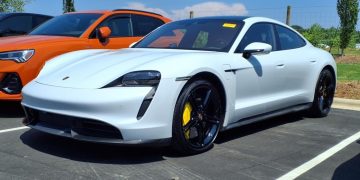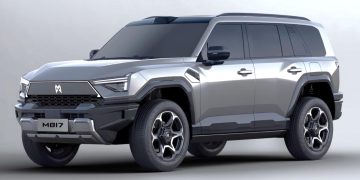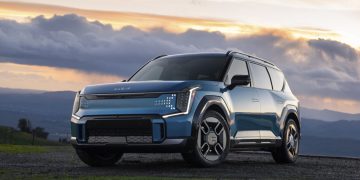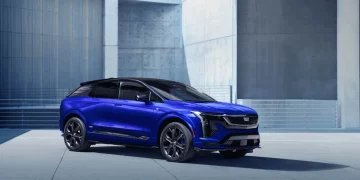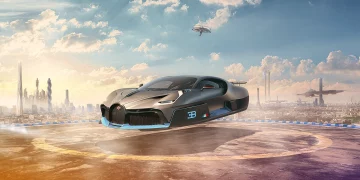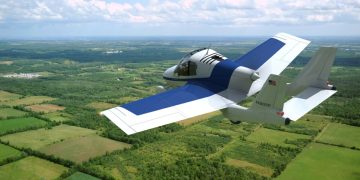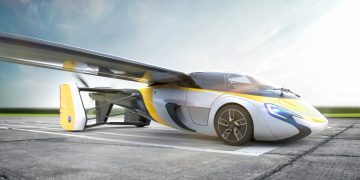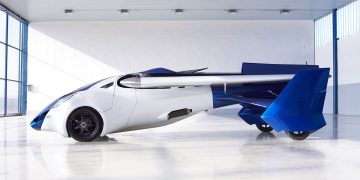Specialty vehicles are an essential part of many industries and activities that require performance in extreme environments. These vehicles are built to withstand harsh conditions, ranging from freezing arctic landscapes to scorching desert sands and everything in between. Whether it’s a military-grade vehicle navigating rugged terrains or a research vehicle equipped for deep-sea exploration, the design features that allow these vehicles to function in such extreme environments are vital for their success.
This article explores the various design features, technologies, and innovations that enable specialty vehicles to adapt to harsh environments. We’ll take a closer look at vehicles designed for specific purposes, such as off-road vehicles, military vehicles, exploration vehicles, and emergency response vehicles, and explore how they’re built to perform under pressure.
1. The Need for Specialty Vehicles in Harsh Environments
As industries and scientific research expand, the demand for vehicles capable of operating in extreme environments has grown significantly. These vehicles are essential for tasks that involve severe weather, off-road conditions, or environments that require specialized equipment and performance.
1.1 Understanding the Challenges of Harsh Environments
Harsh environments present a unique set of challenges for vehicle design. Extreme weather conditions, such as high heat, heavy snow, or high winds, can affect a vehicle’s functionality and durability. Additionally, off-road and remote locations can present obstacles such as rocky terrains, deep mud, or shifting sand dunes. Each environment requires a different approach to vehicle design and engineering.
- Extreme Cold: Vehicles used in the Arctic or other frozen regions must deal with freezing temperatures that affect battery life, fuel efficiency, and component integrity.
- Extreme Heat: Vehicles operating in deserts or arid climates need to be designed to avoid overheating, with systems in place to regulate temperature and prevent engine failure.
- Rough Terrain: Off-road vehicles must handle rugged terrain, including rocks, deep mud, and uneven surfaces, which require durable suspension systems and high ground clearance.
- Water Exposure: Vehicles used in flood-prone areas or on water need to be waterproof or at least water-resistant to ensure they can operate without damage.
In addition to these environmental factors, vehicles used in remote areas must often operate without access to refueling stations, making fuel efficiency and autonomy key components of their design.
2. Key Design Features of Specialty Vehicles
To operate in these extreme conditions, specialty vehicles are equipped with specific design features that allow them to excel. These features range from modifications to the vehicle’s engine and fuel systems to innovations in tire design, suspension, and more.
2.1 Enhanced Engine and Fuel Systems
Engines in specialty vehicles must be highly adaptable to extreme temperatures and challenging conditions. For example, vehicles designed for cold environments often have modified fuel systems that prevent fuel from freezing. In contrast, vehicles designed for extreme heat need engine cooling systems that can prevent the engine from overheating.
- Cold-Weather Adaptations: Engines in vehicles designed for cold climates are equipped with oil and fuel heaters, high-capacity batteries, and thermostatically controlled systems to ensure the engine starts and runs efficiently in freezing temperatures.
- Heat Resistance: In desert climates, vehicles need to be equipped with heat shields, advanced air conditioning systems, and engine coolants that can handle the intense heat without failing.
Additionally, some specialty vehicles use alternative fuels or renewable energy sources, such as electric power, to help them navigate difficult conditions. Electric vehicles in extreme environments need to be equipped with high-performance batteries that are designed to handle temperature fluctuations.
2.2 Robust Suspension and Off-Road Capabilities
Specialty vehicles intended for rough terrain need to be equipped with durable suspension systems that can handle bumps, rocks, and uneven surfaces. These vehicles often feature heavy-duty suspension systems that include:
- Long-Travel Suspension: To absorb shocks from rough terrain and prevent vehicle damage, specialty vehicles use long-travel suspension systems that allow the wheels to move up and down with greater range.
- High Ground Clearance: Vehicles designed to traverse rocky terrain or deep mud need to have high ground clearance to avoid undercarriage damage and ensure the vehicle can pass over obstacles without getting stuck.
- Heavy-Duty Shocks: Shocks and struts in these vehicles are built to withstand repeated impacts from rough roads, ensuring a smooth ride in even the harshest conditions.
This combination of suspension systems helps the vehicle maintain stability and ensures that the vehicle’s performance is not hindered by challenging landscapes.
2.3 All-Terrain Tires
The tires of specialty vehicles are one of the most important components for navigating extreme conditions. All-terrain tires are designed with enhanced tread patterns that allow them to grip a variety of surfaces, from icy roads to sandy dunes or rocky trails.
- Tires for Cold Environments: Vehicles used in cold environments often use specialized tires designed for snow and ice, with deeper treads and rubber compounds that remain flexible in freezing temperatures.
- Tires for Hot Environments: Vehicles in hot climates require tires that can withstand high temperatures without degrading. These tires are designed with heat-resistant materials and reinforced sidewalls.
- Tires for Rough Terrain: Off-road vehicles often use large, knobby tires that provide better traction on uneven surfaces like rocks, mud, or dirt, preventing the vehicle from getting stuck and ensuring maximum grip.
These specially designed tires allow vehicles to handle a variety of terrains while ensuring the driver’s safety and comfort.

3. Advanced Technologies for Harsh Environment Adaptation
The advancement of technology has significantly influenced the design of specialty vehicles, especially in the context of adapting to extreme environments. From automated systems to climate control, these innovations play a crucial role in ensuring the vehicle can perform at its best.
3.1 Autonomous Navigation Systems
In some harsh environments, such as remote areas or areas with low visibility (e.g., snowstorms or desert sandstorms), autonomous navigation systems can be invaluable. These systems use GPS, radar, and other sensors to enable the vehicle to navigate difficult terrain without human input.
- Automated Terrain Recognition: In extreme environments, the vehicle must be able to detect obstacles, changing terrain, and hazardous conditions. Automated systems help guide the vehicle through these challenges while reducing the risk of human error.
- Off-Road Autonomous Vehicles: Some vehicles used in rugged environments, such as exploration or military vehicles, are equipped with autonomous features that allow them to traverse terrain without the need for constant driver intervention.
These autonomous systems are essential in improving the safety and reliability of specialty vehicles, especially in environments where human operators might face fatigue or danger.
3.2 Climate Control Systems
In extreme climates, especially those that fluctuate dramatically in temperature, maintaining an optimal operating environment inside the vehicle is critical for both driver and vehicle performance. Vehicles designed for extreme cold or heat often have advanced climate control systems that regulate both internal temperatures and protect vital systems.
- Cold Weather Climate Control: For vehicles operating in the arctic or mountainous regions, advanced heating systems and thermal insulation are key to ensuring that engines remain functional, and passengers remain comfortable in sub-zero temperatures.
- Heat Management for Hot Environments: Vehicles operating in the desert or high-temperature areas often incorporate heavy-duty air conditioning systems and heat-resistant materials to protect both the vehicle’s internal systems and its occupants from overheating.
These climate control systems not only ensure that the vehicle can operate efficiently in extreme temperatures but also improve the comfort and safety of passengers and operators.
3.3 Advanced Materials for Durability and Protection
The use of advanced materials plays a significant role in helping specialty vehicles withstand harsh conditions. Materials like carbon fiber, titanium, and high-strength steel are commonly used in the construction of specialty vehicles, providing strength, durability, and resistance to wear and tear.
- Corrosion Resistance: Vehicles operating in humid or saline environments, such as near oceans or in tropical climates, need to be resistant to rust and corrosion. Specialized coatings and corrosion-resistant materials are essential for ensuring that the vehicle’s chassis and components last.
- Impact Resistance: Off-road vehicles and military vehicles, in particular, require materials that can withstand impacts from debris, rocks, and other obstacles. Materials like armored steel and reinforced composites are commonly used for this purpose.
By utilizing these advanced materials, specialty vehicles are better equipped to handle the rigors of extreme environments without sacrificing performance or safety.
4. Specialized Vehicle Types for Extreme Environments
Different environments require different types of vehicles, each designed with specific features to meet the demands of the terrain and climate. Here are a few examples of specialty vehicles designed for harsh environments:
4.1 Military Vehicles
Military vehicles are built to withstand the most extreme environments, from desert warfare to arctic combat. These vehicles are designed for maximum durability and are equipped with advanced technologies such as bulletproof armor, off-road capability, and climate control systems to ensure operability in the harshest conditions.
4.2 Off-Road Vehicles
Off-road vehicles, such as those used for recreational purposes, exploration, or research, are designed to tackle rugged terrain. These vehicles are equipped with high ground clearance, reinforced suspension systems, and large, all-terrain tires to ensure they can handle everything from snow and ice to rocky and muddy paths.
4.3 Exploration Vehicles
Vehicles used for scientific exploration, such as those designed for the Arctic or deep-sea research, are built with specialized features to handle extreme conditions. These vehicles may be equipped with temperature control systems, special tracking systems, and durable bodies designed to survive harsh environments.
4.4 Emergency Response Vehicles
Emergency vehicles, such as ambulances, fire trucks, and search-and-rescue vehicles, must be capable of operating in a variety of difficult environments. Whether it’s navigating a flooded area, driving through heavy snow, or working in extreme heat, these vehicles need to be prepared for anything. Features like four-wheel drive, reinforced tires, and special communication systems are essential for ensuring the vehicles perform in emergencies.
5. Conclusion
Specialty vehicles are designed to operate in some of the world’s most unforgiving environments. From off-road vehicles to military machines, each vehicle is equipped with cutting-edge technology, advanced materials, and highly specialized design features that enable them to handle extreme conditions. As demand for such vehicles grows and environmental conditions become more unpredictable, innovation in vehicle design will continue to evolve, pushing the boundaries of what these vehicles can achieve.









